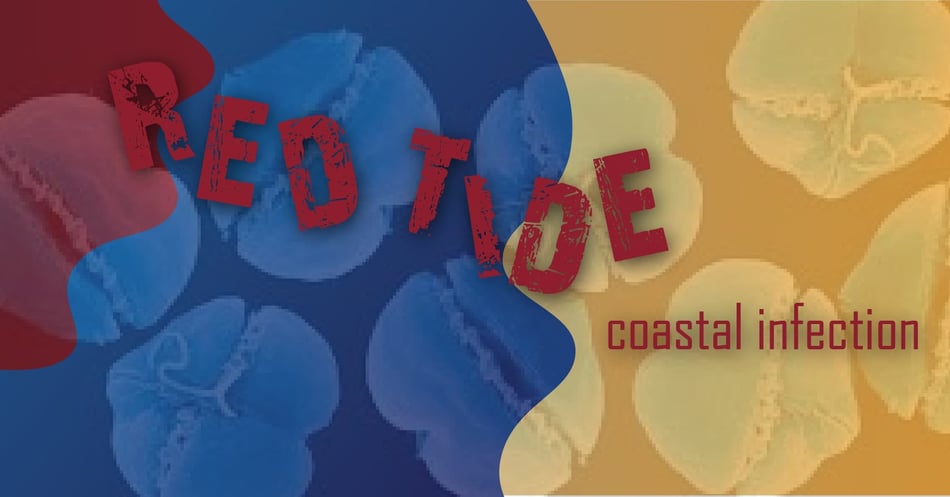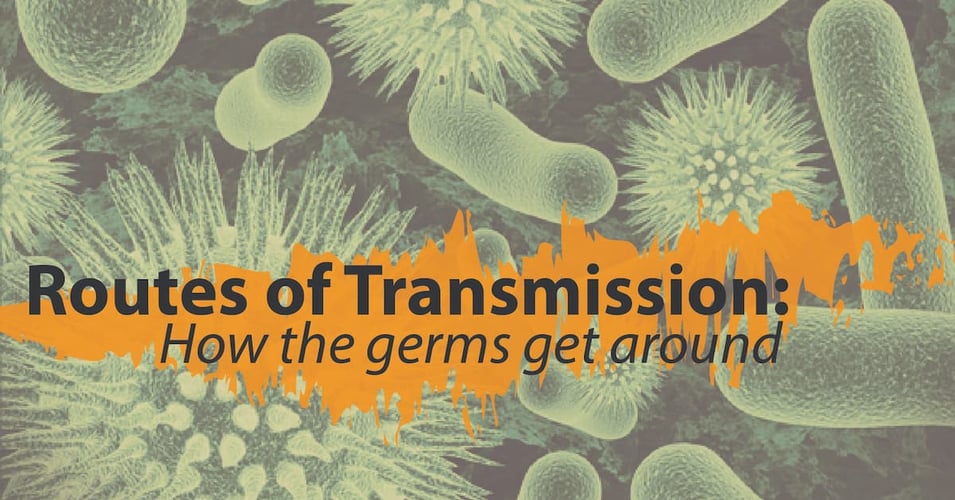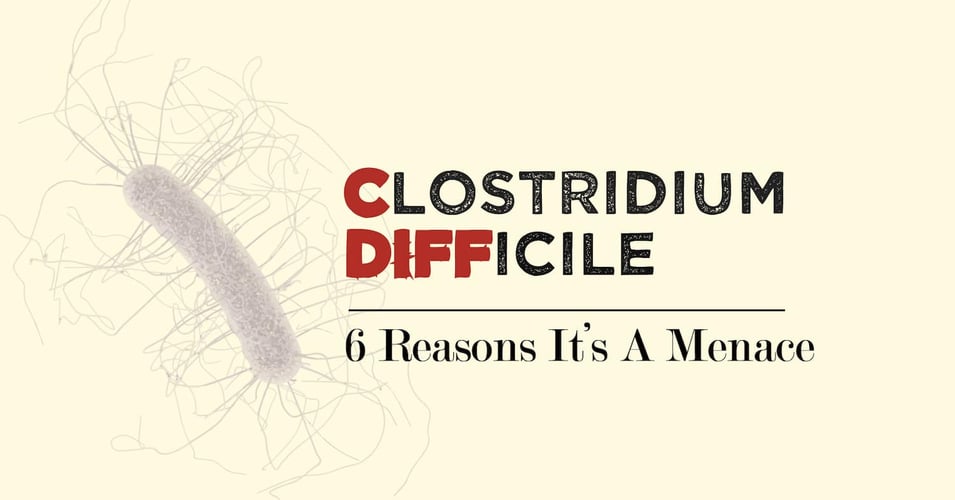Red Tide: A Coastal Infection

 Every summer, headlines around the world war of dangerous "red tide," a harmful algal bloom that threatens marine life and humans alike. Usually forming in August, these sudden explosions of opportunistic algae peak later in the fall, causing ecological, economic, and health impacts. In today's post, we'll explore how the coastal contaminant shares many characteristics of a healthcare associated infection.
Every summer, headlines around the world war of dangerous "red tide," a harmful algal bloom that threatens marine life and humans alike. Usually forming in August, these sudden explosions of opportunistic algae peak later in the fall, causing ecological, economic, and health impacts. In today's post, we'll explore how the coastal contaminant shares many characteristics of a healthcare associated infection.
First, just what is this Red Tide and where does it come from? The “harmful algal bloom”, or HAB, begins far offshore, when a one-celled organism called Karenia brevis reproduces out of control, for reasons scientists do not yet fully understand. Following water and air currents, and depending on water temperatures and salinity, the mass of red-tinted algae ultimately reaches the coast, where it encounters water with less salt. In order to preserve the right balance of salt within their cells, the algae begins a chemical process that results in the release of toxins that kill marine life and can cause respiratory problems in land-dwellers. The consequences are destructive, to both marine life and marine economies.
The Red Tide operates in much the same way as an opportunistic bacterial infection such as C. difficile. This pathogen, just like K. brevis, can live in small numbers and not cause any problems to the host. In fact, many algae that bloom can be an important part of the ocean food web. However, if the conditions are favorable to reproduction, such as if the host takes antibiotics that kill off all competing microorganisms, C. difficile can also grow out of control and begin to release harmful toxins.
Unless the proper cleaners and environmental safeguards are in place, one C. difficile case can quickly lead to an outbreak that affects surrounding patients. The harmful algae can also be “contagious,” given the right conditions. While oceanic K. brevis blooms have not been directly linked to any human-caused nutrient pollution, if the organism is transported to an inland body of water, it can use human nutrient pollution as a source of energy and escalate to a poisonous bloom.
Thankfully, medical science is way ahead of ocean science when it comes to curing these overgrown organisms. There is no practical or acceptable way to control K. brevis HABs at this time, since any proposed methods would also affect benign marine organisms. However, there are a number of ways to prevent and treat a C. difficile infection (CDI). Research shows that antibiotic stewardship - that is, preventing unnecessary antibiotic use - can lead to fewer cases of CDI. Using the right cleaners and preventive biocidal surfaces can help prevent transmission, and new interventions for treatment are being introduced regularly.
There is encouraging news that a new ozone treatment may, one day, help control HABs such as the Red Tide. While that process is developed, however, coastal dwellers and tourists must contend with the consequences and impact of what is becoming an annual “coastal infection” of K. brevis.
![EOScu Logo - Dark - Outlined [07182023]-01](https://blog.eoscu.com/hubfs/Eoscu_June2024/Images/EOScu%20Logo%20-%20Dark%20-%20Outlined%20%5B07182023%5D-01.svg)





